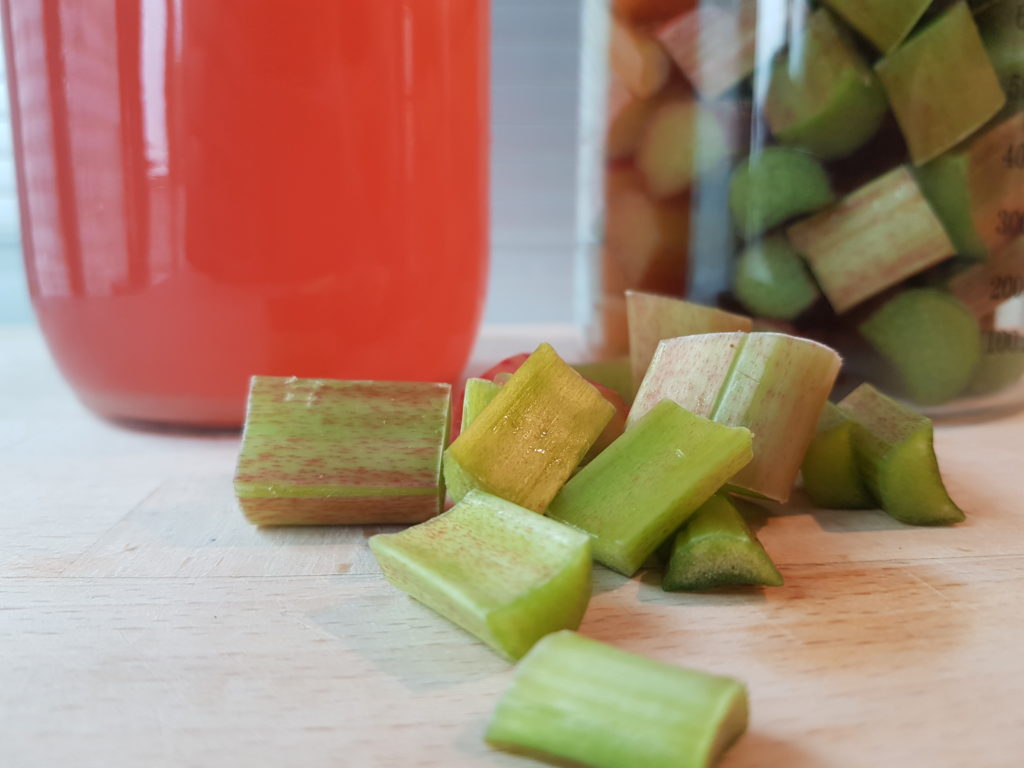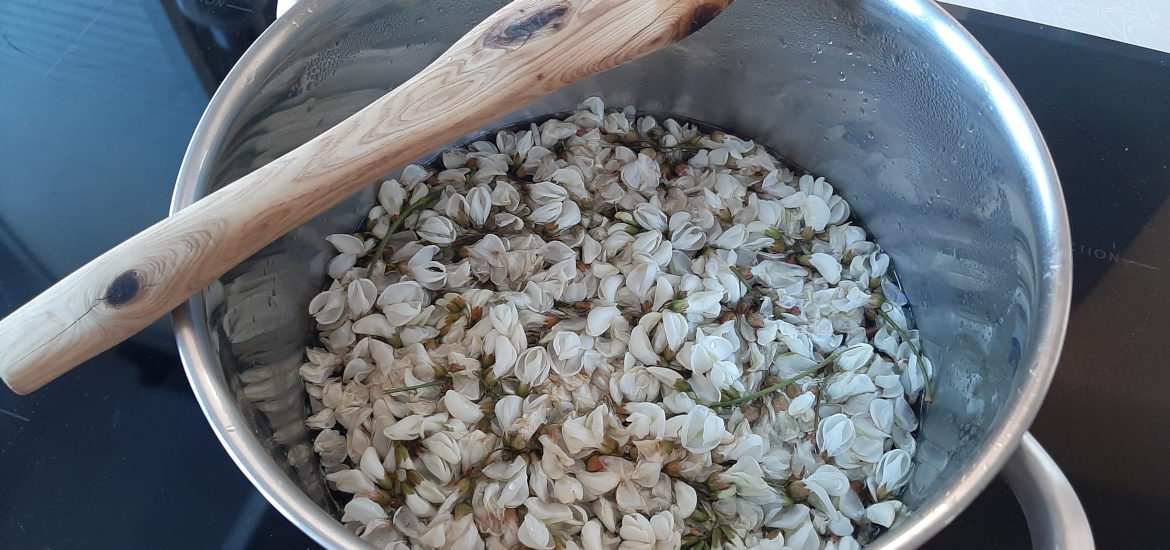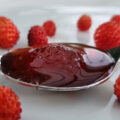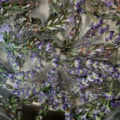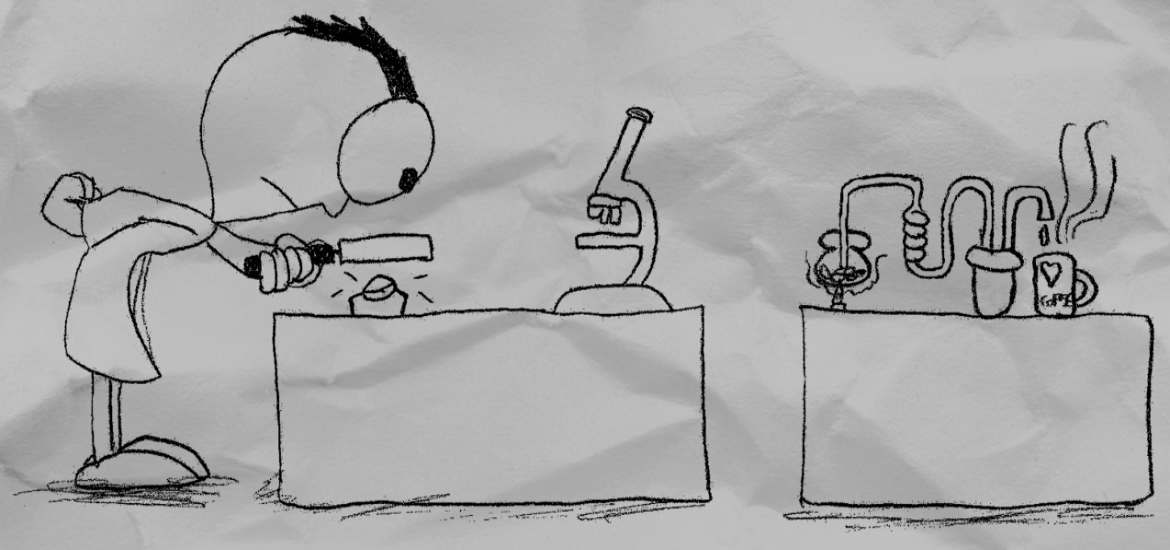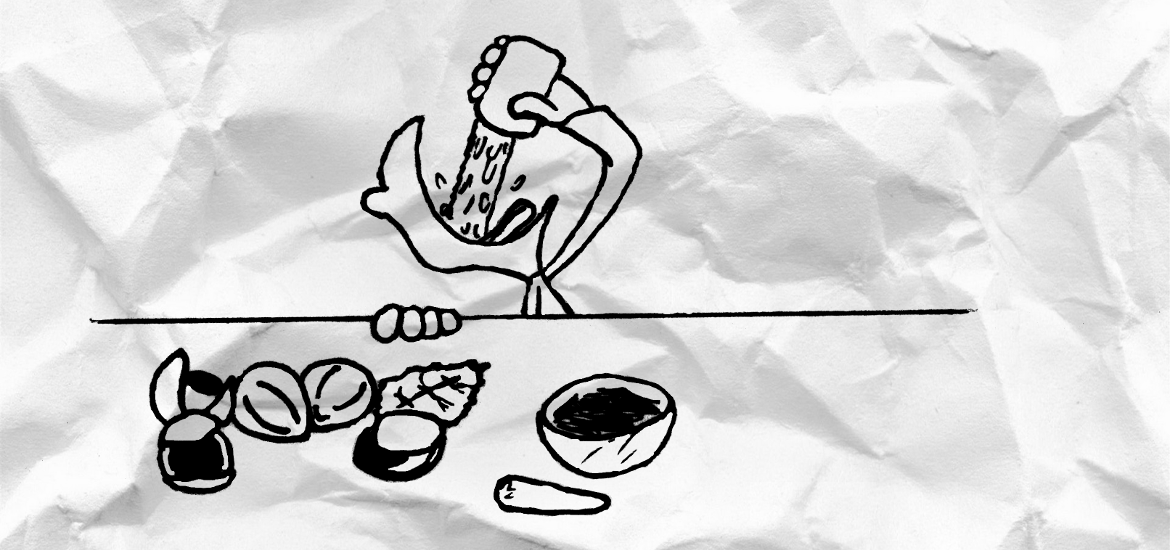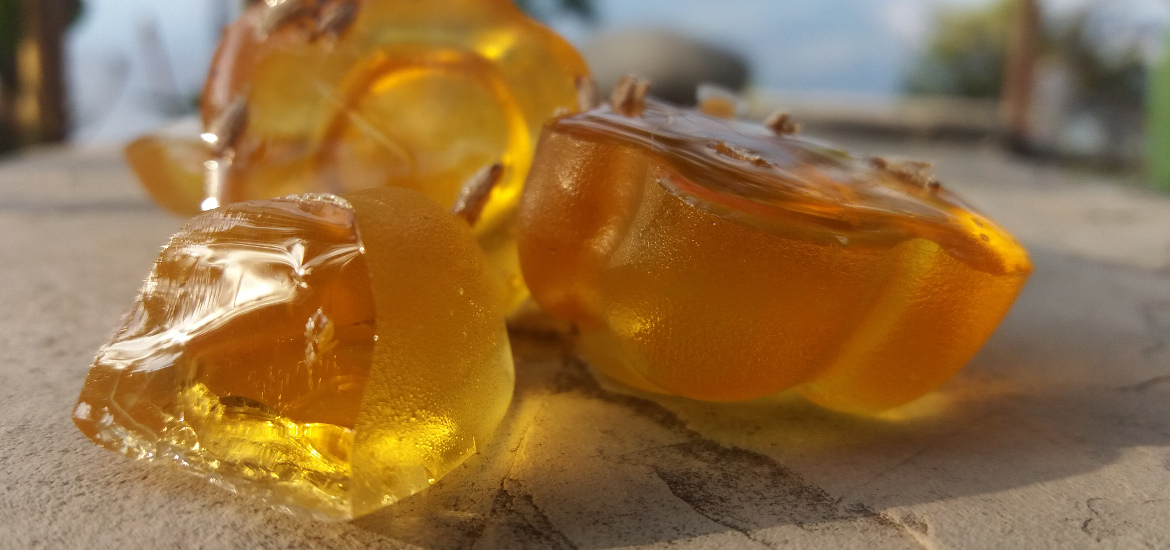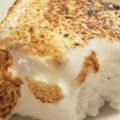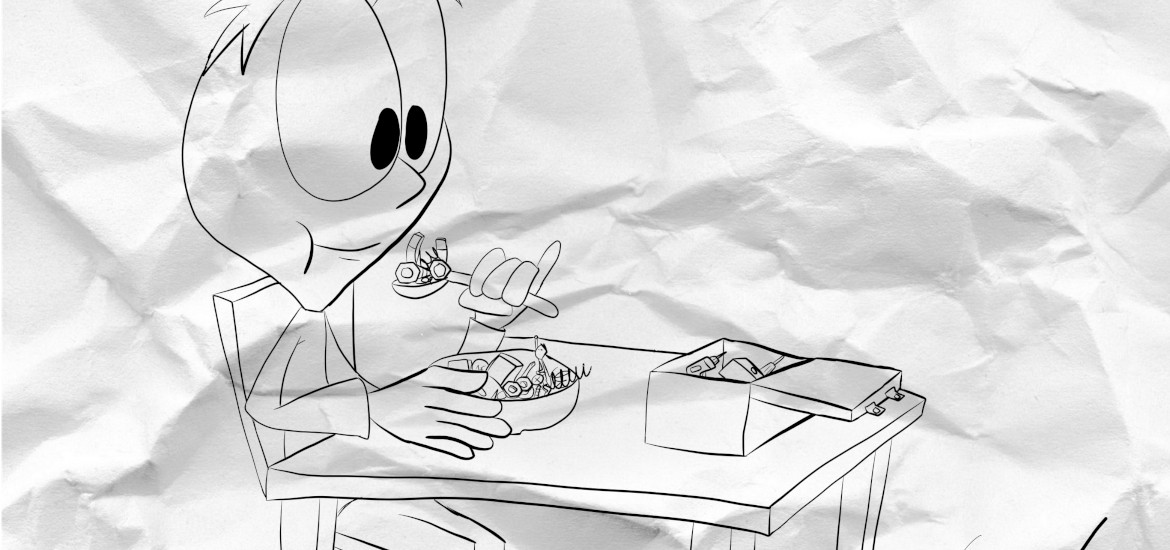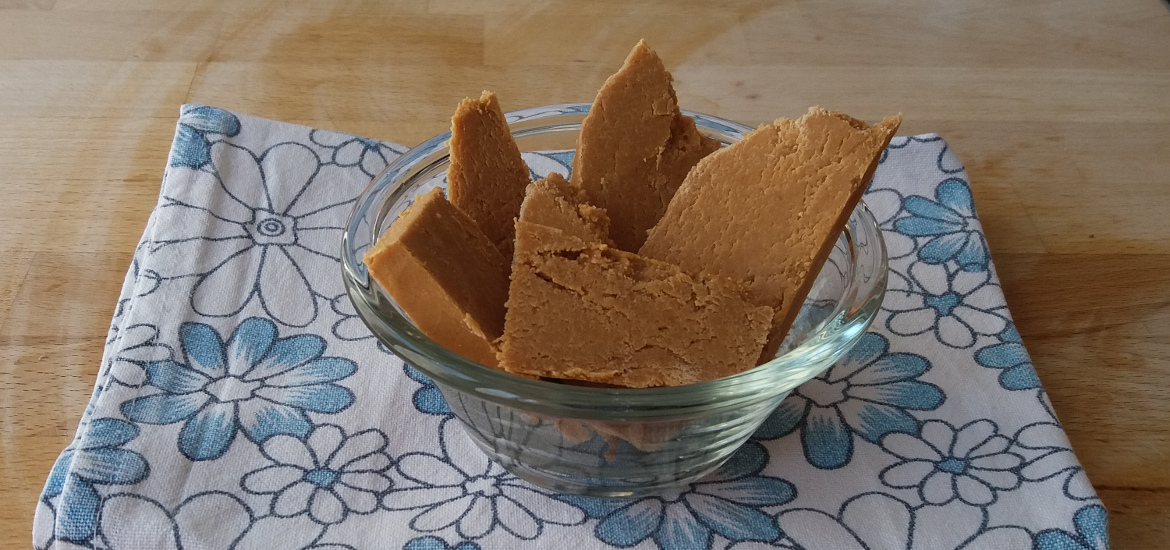Syrups are a really simple way to extract flavors from herby or fruits. Syrups preserve the taste and smell for a long time (at least a year) and this without the help of artificial preservatives, only sugar is present. Besides refreshing drinks and cocktails, syrups are generally useful in the kitchen – from making sweets to preparing meat.
Usually the process of preparing a syrup is similar for many types of herbs and fruits. Just check out my lavender syrup recipe and all the cool things that you can prepare with it. But sometimes things are not that simple and therefore I have noted some exceptions below.
Simple syrups
In essence, all syrups are prepared in the same way. You mix table sugar and water, add herbs or other interesting plant material and let it soak for some time. Remove the plant material and voila, your syrup is ready. The amount of sugar is important, since it acts as a preservative meaning it prevents the growth of bacteria. Around 50% of sugar (w/w) is enough to prevent the growth of most bacteria, above 60% you cover more or less all of them. If you further add some citric or ascorbic acid, the chances of microbial growth decrease even more. And the syrup tastes fresher due to increased acidity. The amount of plant material depends on how much taste you want. General rule for the plant volume would be around 20% of water volume. But it can be less with plants that have strong taste and more if plants are mild in taste. If the material is hard (bark, wood) then it is advisable that you cook the material. Otherwise it is better to dip the plants in cooled syrup, to avoid loss of essential oils and other fragrances.
Simple syrup recipe:
- Plant material of your choosing (aroud 200 ml by volume)
- 1 kg table sugar
- 1 l water
- 20 g citric acid
Rhubarb syrup
Well, rhubarb syrup is not something that you encounter everyday. But with it fabolous color and special taste, this is quite something to behold and to taste.
Ingredients:
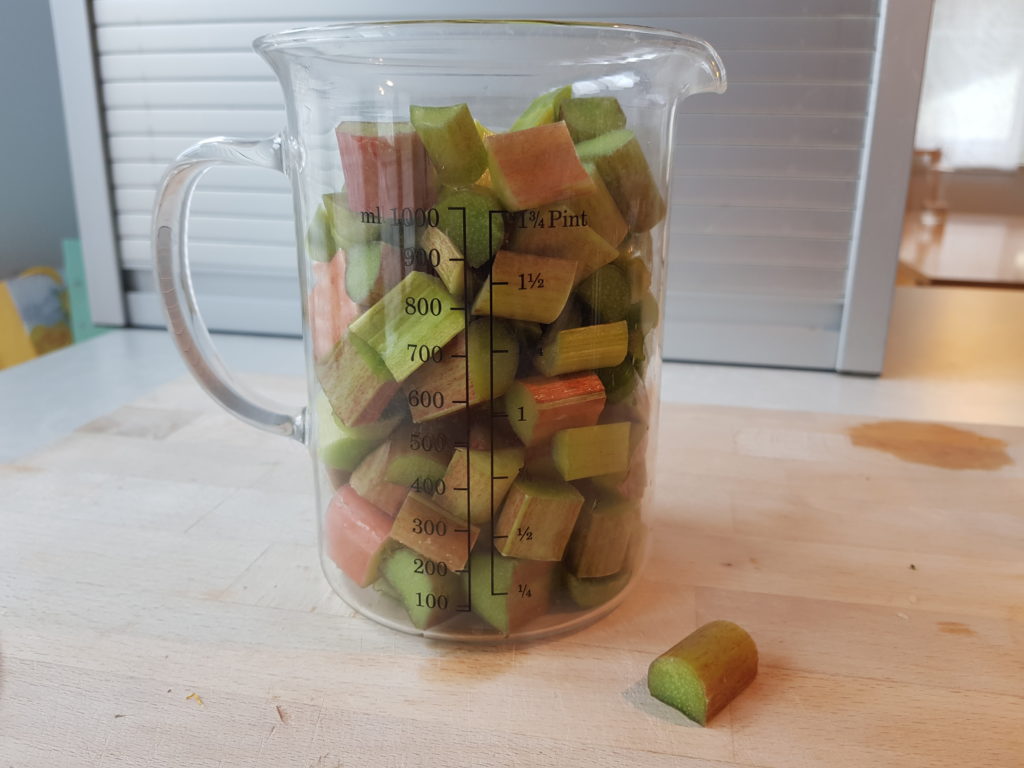
- 1 kg rhubarb stems, wahed, not peeled
- 1 kg table sugar
- 20 g citric acid
- 1 l water
The trick to the awesome pink color is in the skin of the rhubarb stems, so do not peel The trick to the awesome pink color is in the skin of the rhubarb stems, so do not peel them! Just wash them and cut them into small pieces. In a suitable pot add water to the rhubarb and bring to boil and cook on low heat for 20 minutes. Add sugar and citric acid, mix until they dissolve and let it cool down for 3-4 hours (overnight is also OK). Remove the rhubarb with a strainer or something similar. Bring the syrup to boil and let it boil gently for 2-3 minutes. Fill in clean, dry bottles which were heated in the oven for 20 minutes at around 200 °C. Close the bottles and store in a dry and cool place.
